The Corinth Canal was one of the things on our bucket list. And today it was going to happen! No idea how things work but we would experience that once we were there. The Corinth Canal is named after the Greek city of Corinth, which is the nearest city to the isthmus. The Corinth Canal connects the Gulf of Corinth with the Saronic Gulf, in the Aegean Sea. We came from that side. It cuts through the narrow Isthmus of Corinth and separates the Peloponnese from the Greek mainland. The canal was dug through the Isthmus at sea level and has no locks. It is 6.4 kilometres in length and only 21.4 metres (70 ft) wide at its base, making it impassable for most modern ships. Nowadays it has little economic importance and is mainly a tourist attraction. Although the canal saves the 430-mile journey around the Peloponnese, it is too narrow for modern ocean freighters. Construction started in 1881 but was hampered by geological and financial problems that bankrupted the original builders. It was completed in 1893 but, due to the canal’s narrowness, navigational problems and periodic closures to repair landslides from its steep walls, it failed to attract the level of traffic expected by its operators.
After completion, the canal experienced financial and operational difficulties. The narrowness of the canal makes navigation difficult. Its high walls, channels wind along its length, and the different times of the tides in the two gulfs cause strong tidal currents in the channel. Another persistent problem was the heavily faulted nature of the sedimentary rock, in an active seismic zone, through which the canal is cut. The canal’s high limestone walls have been unstable from the start. Although it was formally opened on July 1893 it was not opened to navigation until the following November, due to landslides. It was soon found that the wake from ships passing through the canal undermined the walls, causing further landslides. Between 1893 and 1940, it was closed for a total of four years for maintenance to stabilise the walls. In 1923 alone, 41,000 cubic metres of material fell into the canal, which took two years to clear out.
The ‘sinking’ bridges
The two ‘sinking’ bridges, originally called subducting bridges, are situated at both ends of the Canal and are unique in Greece. They are the only bridges to lower themselves under the water, to allow a passing boat to cross above them. The two bridges were only constructed in 1988 and submerge approximately 10,000 times every year. The NW bridge is at Poseidonia, linking Corinth with Loutraki. The SE bridge is at Isthmia, linking Isthmia with Athens. Visitors can stop and park next to the Isthmia ‘sinking’ bridge on the old National Highway, which links the Peloponnese with Attica. There are a couple of tavernas close to this bridge, on each side of the Canal, where you can sit and enjoy a relaxing cool drink while viewing the whole operation. You will see this bridge submerging under the water, and then reappearing again once the vessel has sailed by.
Instructions when sailing the Corinth Canal
Isthmia entrance to the Canal (East End)
A yacht should call Corinth Canal Control on VHF channel 11 when around an hour from the canal to announce arrival and enquire about the next transit from E to W. If approaching from this E side at Isthmia ( Ίσθμια), you will need to go alongside the quay to port side of the channel and visit the office to complete the paperwork and pay the fee. The quay is quite high and the bollards widely spaced, although there are some lower sections with steps. Once you have completed the formalities, keep listening watch on VHF channel 11 for notification when you can proceed. The staff will usually give you a rough estimate of the waiting time. The road bridge will lower and the lights will go green when it is safe to enter. Note that if they stay red it indicates that W-E traffic is coming through and you must not attempt to enter. If in doubt, call on the VHF. There is a restaurant where you can pass some of the waiting time. Warning: While you are alongside the quay on the E side be aware of the very strong turbulence created by large ships. Use plenty of spring lines and fenders.
Poseidonia Entrance to the Canal (West end)
A yacht should call Corinth Canal Control on VHF channel 11 when around an hour from the canal to announce arrival and enquire about the next transit from W to E. Usually on the West (Poseidonia – Ποσειδωνία) side you will have anchor off on arrival and wait your turn, which may take several hours at busy periods. Once you are given clearance you must stay in contact with the controller via VHF channel 11 (a handheld unit on the cockpit is a real help). The road bridge will lower (sink) and the lights will go green when it is safe to enter. Note that if they stay red it indicates that E-W traffic is coming through and you must not attempt to enter. If in doubt, call on the VHF. After the transit, you need to go alongside on the quay to starboard at the E end at Isthmia and go to the canal office to pay the fee. Note that the quay is quite high and bollards widely spaced; however, there are some lower sections with steps.
Passage through the Canal
While transiting the canal you must, as advised above, stay in contact with the controller via VHF channel 11. In general, the passage through the canal is uneventful if you maintain enough speed to have complete control of your yacht but resist the urging of the control operator to speed up. Remember that they are used to large ships and not small yachts. A speed of around 5 – 6 knots is usually enough to keep steerage control in the event of turbulence and to keep the controller happy.
Danger: While transiting try to stay well behind any large ship ahead of you to avoid losing control because of the turbulence.
Warning: There is a current in the canal which can reach 3 knots (although 1.0 – 1.5 is more usual). Its direction can be either way, depending on the state of the tides.
All the information and a calculator what your costs will be via this link: http://aedik.gr/?lang=en
We were very lucky as we were the only ones going through the canal. So nobody in front of us. We are working on a video but will be placed when ready! The video below is just a small video which I placed on social media! But it gives a nice idea already!


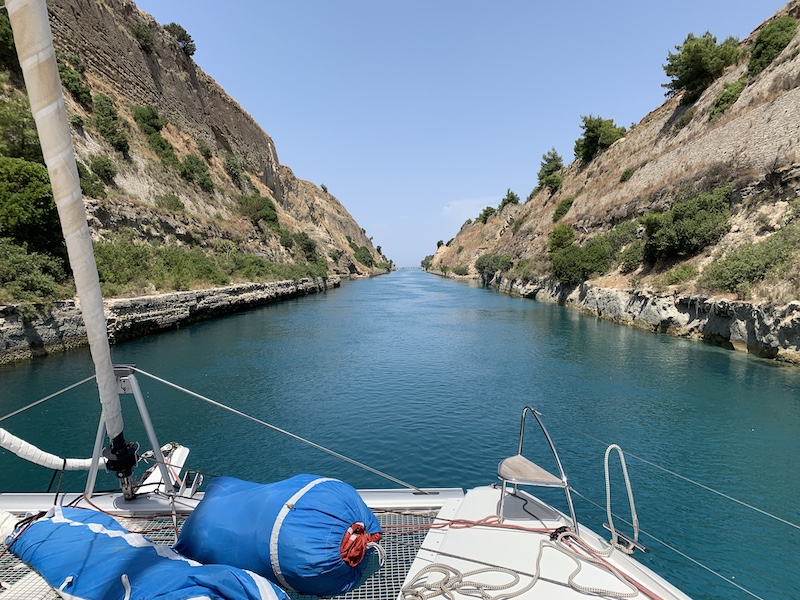
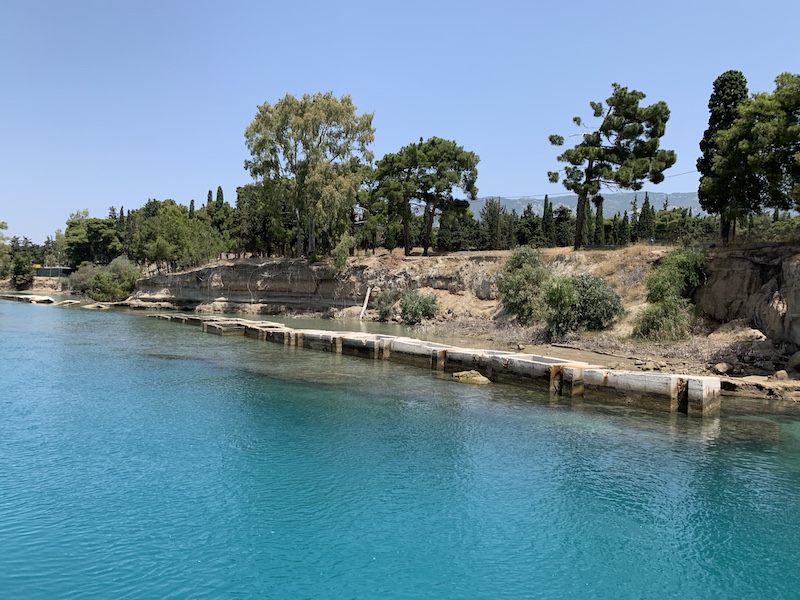
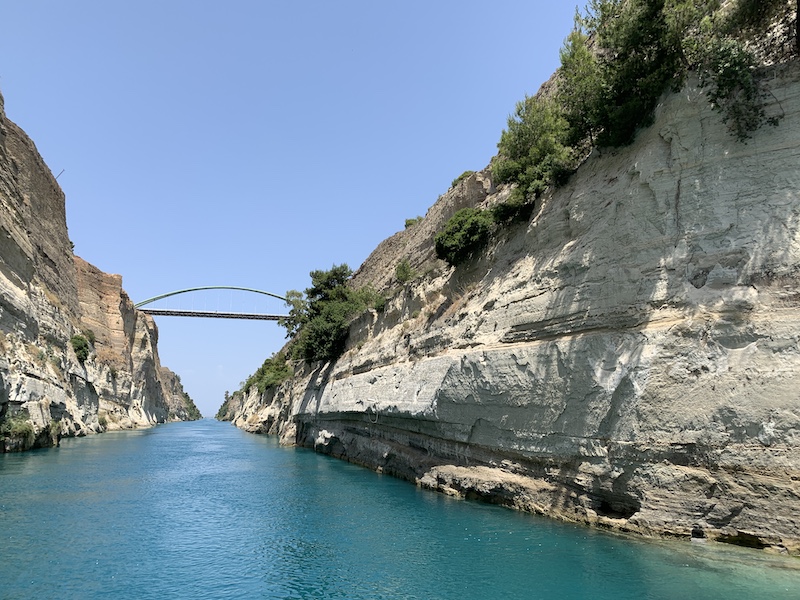
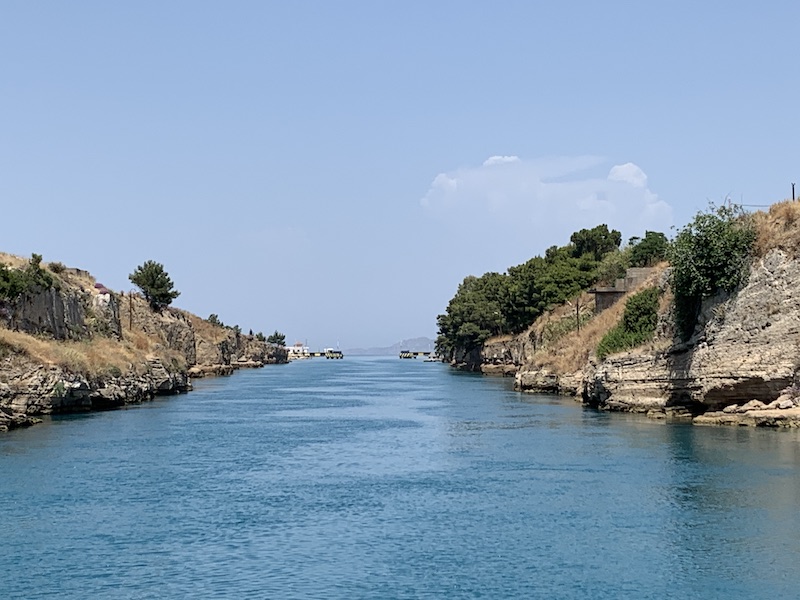
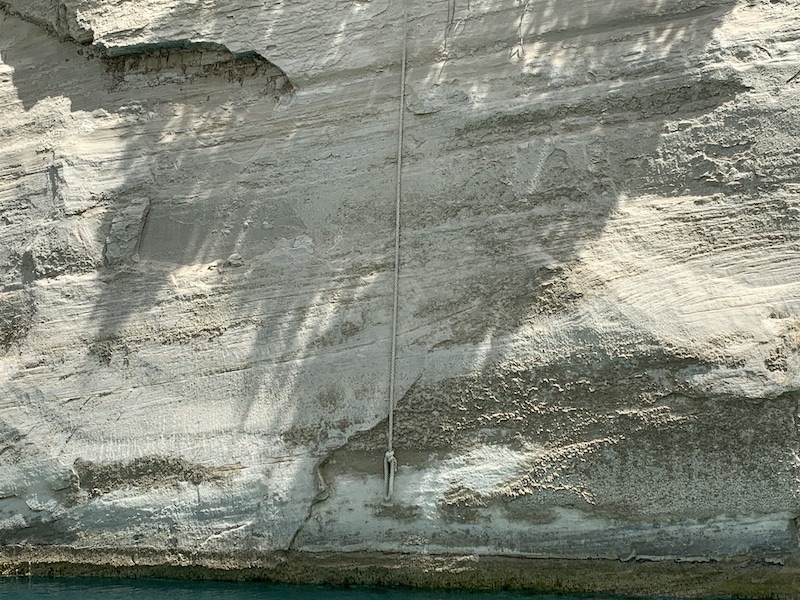
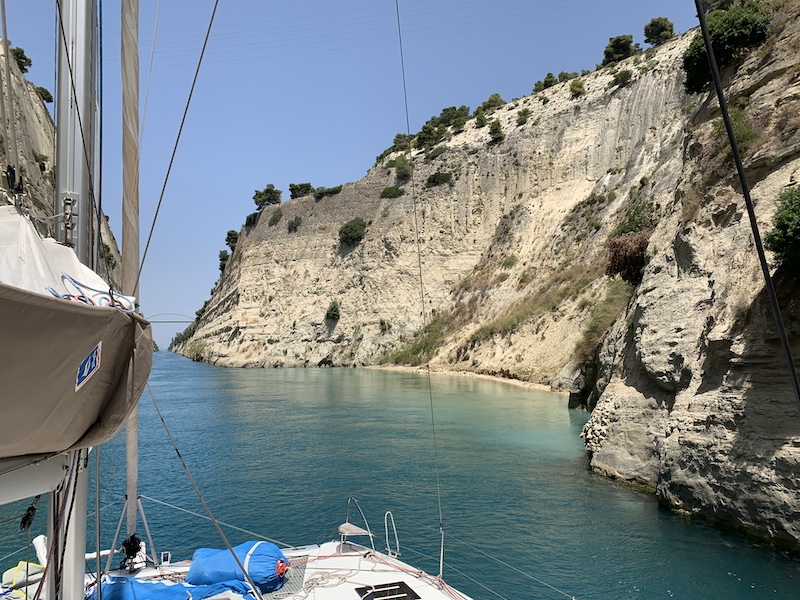
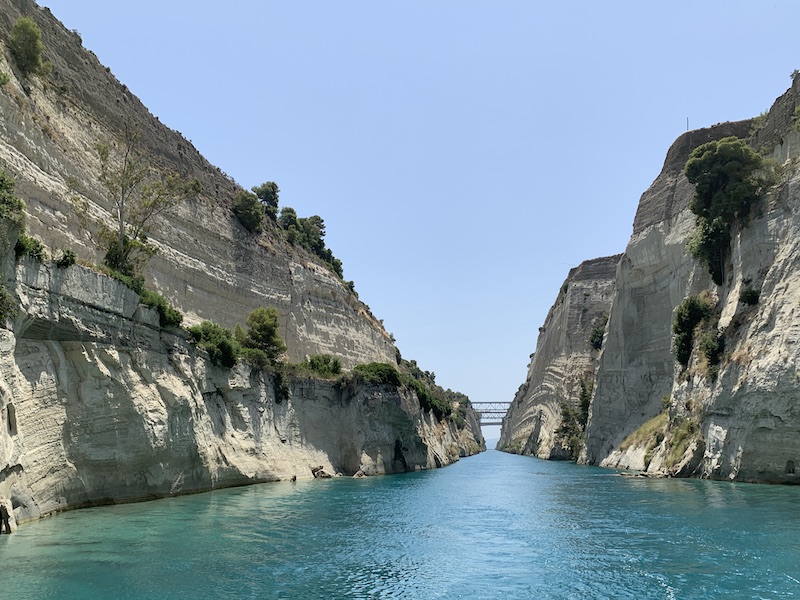
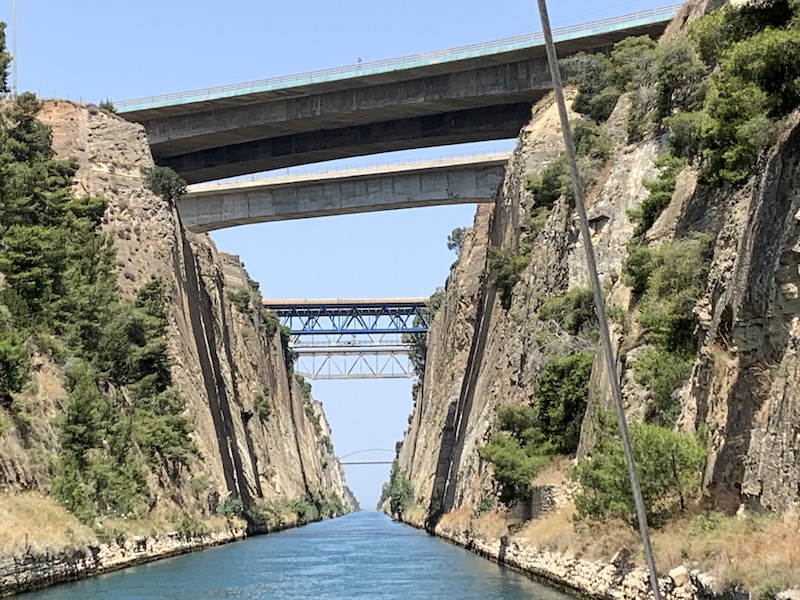
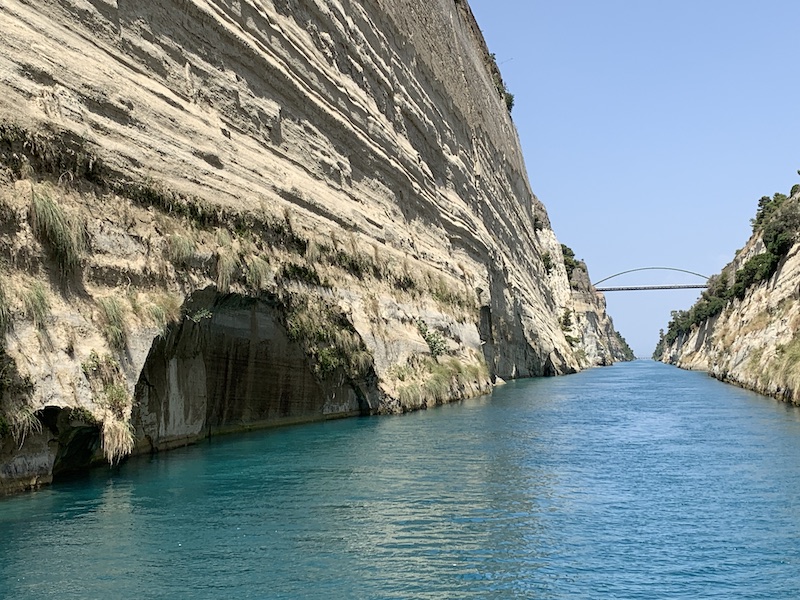
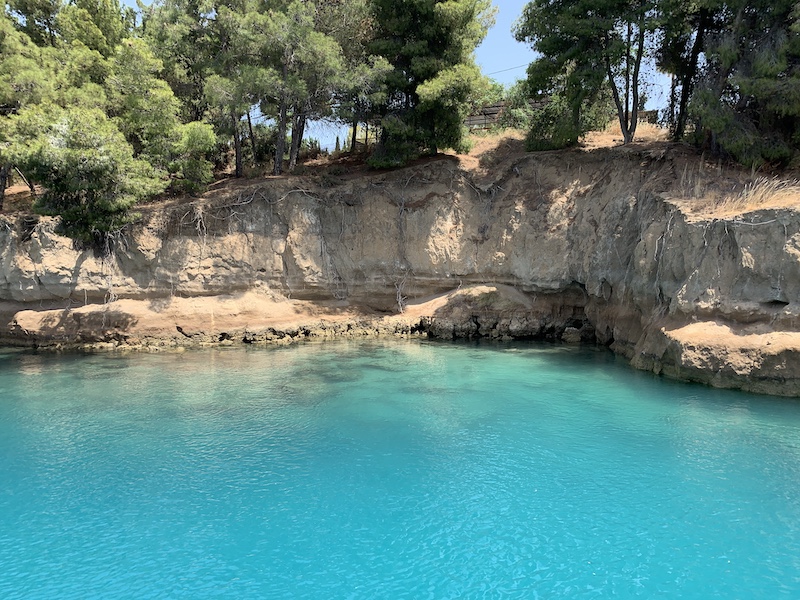
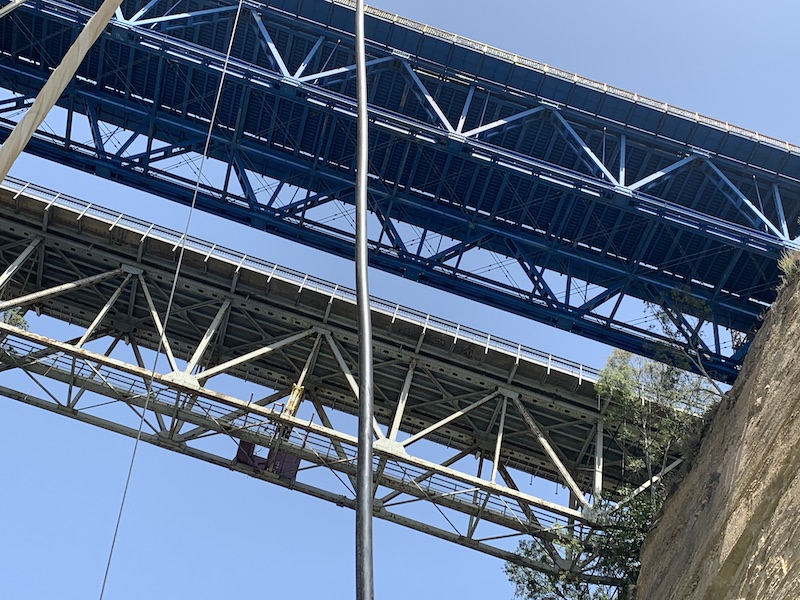
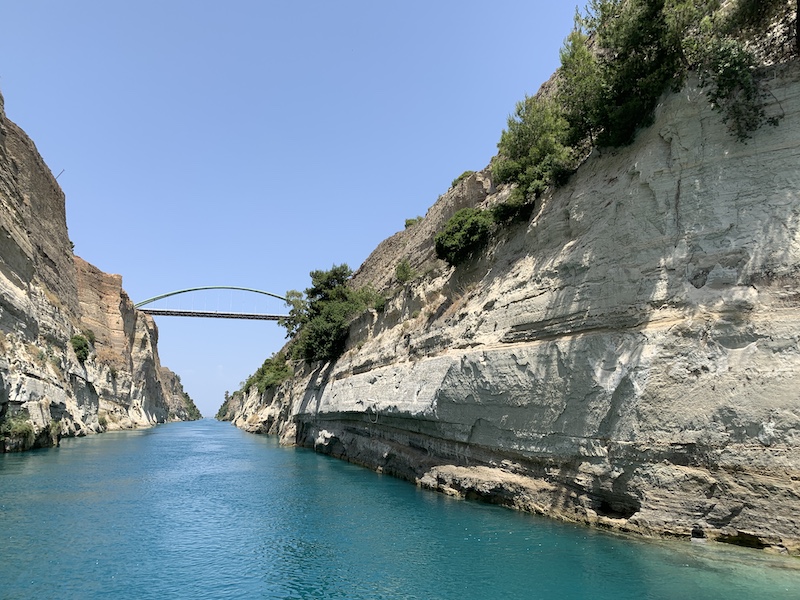
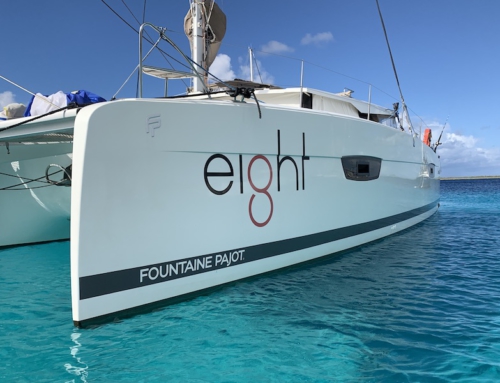
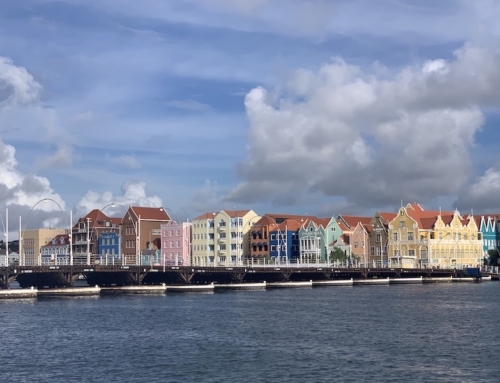
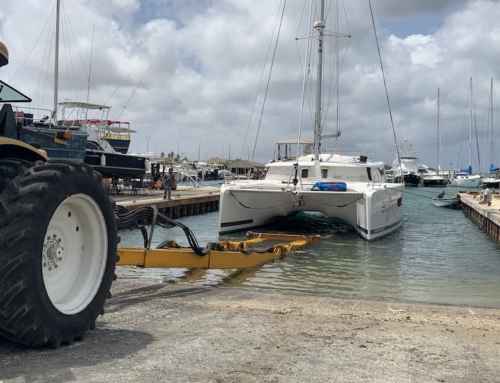
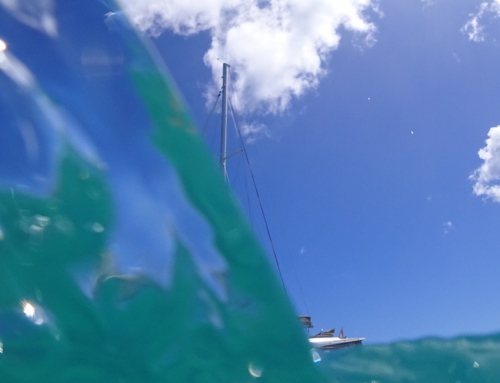
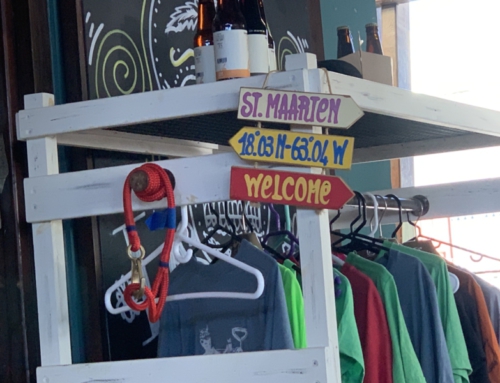
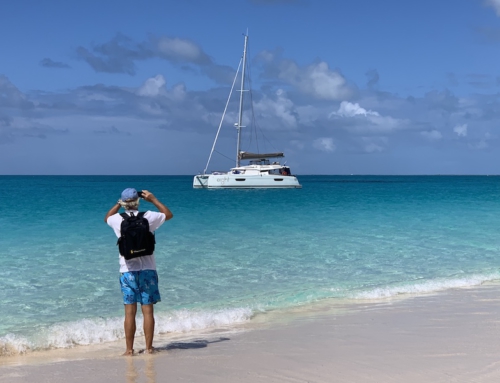
Leave A Comment